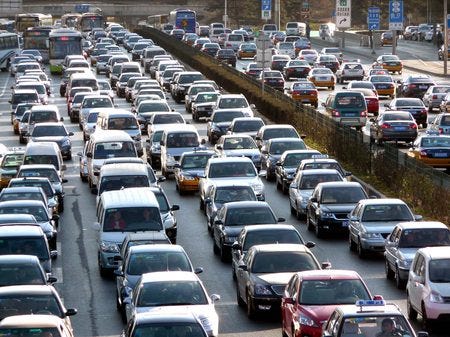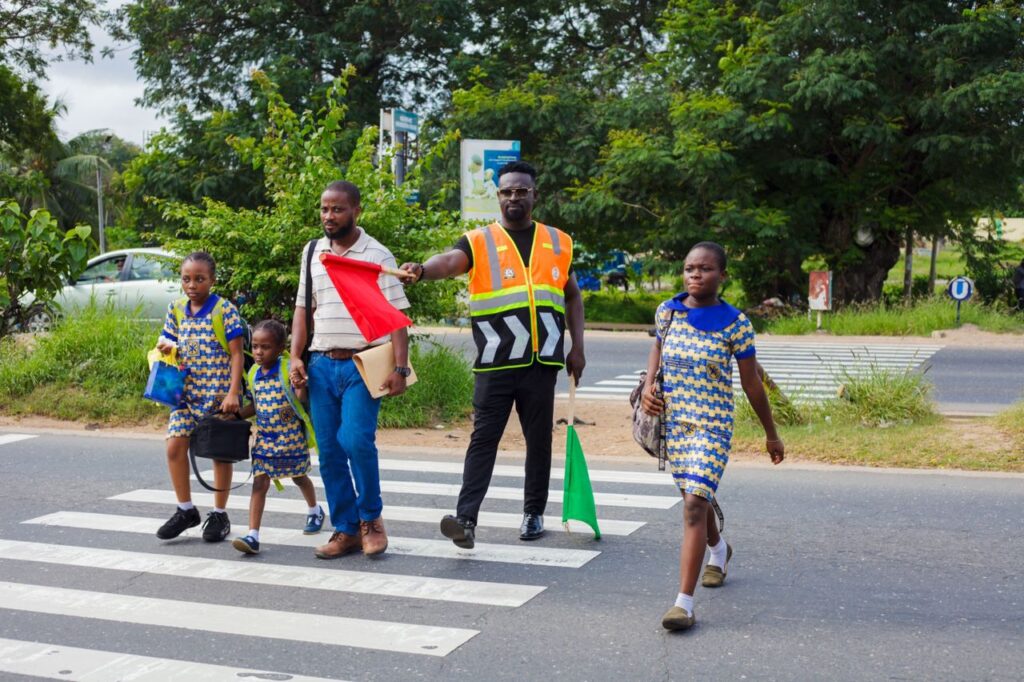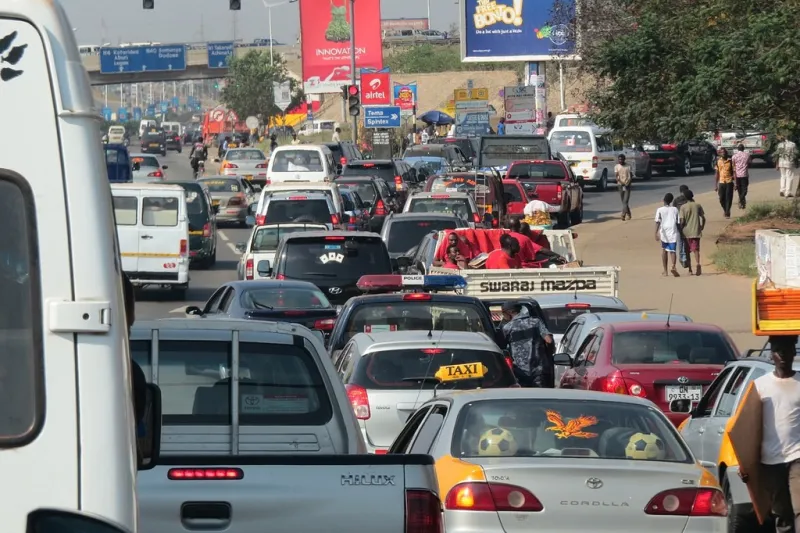Roads in Ghana come with many challenges caused by different problems. Poor road conditions are a big issue, especially in rural areas. According to the Ghana Highway Authority, 19% of roads in Ghana are classified as being in poor condition, which significantly increases the risk of vehicle damage and accidents. In cities like Accra, traffic jams make it hard for people to get things done and also add to pollution. A study on traffic congestion in Accra revealed that commuters can spend up to 70 minutes in traffic daily, leading to lost productivity and increased fuel consumption. Unsafe driving habits, like speeding and lack of proper training, also contribute to the problem. In 2023 alone, Ghana recorded 14,135 road accidents, resulting in 2,276 fatalities and 15,409 injuries, according to the Motor Traffic and Transport Department (MTTD). These factors combined make traveling on Ghana’s roads difficult for many.
Traffic in Ghana is more than just a nuisance—it’s a way of life. For many Ghanaians, the daily commute feels like a battle against time, stress, and chaos. Whether you’re in the bustling streets of Accra or the busy roads of Kumasi, traffic jams have become an unavoidable part of the day. But what’s causing this gridlock, and how does it affect the people who live through it every day?
What’s causing the traffic?

The traffic situation in Ghana is the result of several interconnected factors. One major issue is the rapid urbanization in cities like Accra and Kumasi. As more people move to these cities for work and opportunities, the number of vehicles on the road has increased dramatically. According to data from the Ghana News Agency, there were approximately 3.2 million registered vehicles in Ghana as of 2022, marking a significant rise over the years. Unfortunately, the road infrastructure hasn’t kept up with this growth. Many roads are narrow, riddled with potholes, or poorly maintained, making it difficult for traffic to flow smoothly.
Public transportation also plays a role. Tro-tros and taxis are a lifeline for many commuters, but they often stop unpredictably to pick up or drop off passengers, causing delays. Reckless driving and a lack of adherence to traffic rules further worsen the situation. Drivers frequently ignore traffic lights, overtake dangerously, or park illegally, creating bottlenecks.
Another contributing factor is the importation of old, used cars. These vehicles are more prone to breakdowns, which can block roads and cause significant delays. Additionally, the lack of efficient traffic management systems, such as synchronized traffic lights or real-time monitoring, means that congestion often goes unchecked.
Systemic issues
During the colonial era, transportation systems were designed primarily to serve the economic interests of the colonial powers. Roads and railways were built to connect resource-rich areas to ports for export, rather than to create a comprehensive network for local development. According to a report in the IIARD Journals, this colonial legacy left Ghana with infrastructure that is unevenly distributed and often inadequate for modern needs.
Externally imposed policies, such as the structural adjustment programs introduced by the International Monetary Fund (IMF) and the World Bank in the 1980s, aimed to reduce government spending and promote privatization. While these policies were intended to improve efficiency, they often led to underfunding of public infrastructure and services, including transportation, according to the same report from IIARD Journals.
Another major issue is the lack of coordination among government agencies responsible for road transport and safety. For example, the Ghana Highway Authority, Department of Urban Roads, and Department of Feeder Roads all manage different aspects of road infrastructure, but their efforts are not always well-integrated. As highlighted by research from Cambridge University Press, this overlap in responsibilities leads to inefficiency and delays in implementing policies.
These systemic issues contribute to the challenges faced by Ghana’s road transport sector, including poor infrastructure, traffic congestion, and safety concerns.
Pedestrian challenges

The challenges faced by pedestrians directly impact the traffic situation in several ways. When there are no proper crossings or pedestrian infrastructure, like footbridges, pedestrians often resort to crossing busy roads at unsafe places. This affect the flow of vehicles and causes delays, especially during peak hours. Drivers have to slow down or stop unexpectedly, leading to bottlenecks and contributing to overall congestion.
Additionally, poor visibility at night increases the risk of accidents involving pedestrians. According to the National Road Safety Authority (NRSA), pedestrians accounted for 41% of road traffic fatalities in Ghana in 2020, highlighting the dangers they face. Accidents involving pedestrians can block roads and cause traffic jams as authorities handle the situation. Without safer pedestrian options, the roads become chaotic, further worsening the traffic problem for everyone.
Solving the problems
Fixing Ghana’s traffic and road issues needs several important changes. First, improving roads by paving more of them and keeping them in good condition is very important. Teaching people about road safety through education and awareness campaigns can help drivers and pedestrians stay safe.
Making sure traffic laws are followed by strengthening law enforcement can stop risky driving habits. Better planning of land and cities can reduce traffic jams by organizing roads and spaces more effectively.




